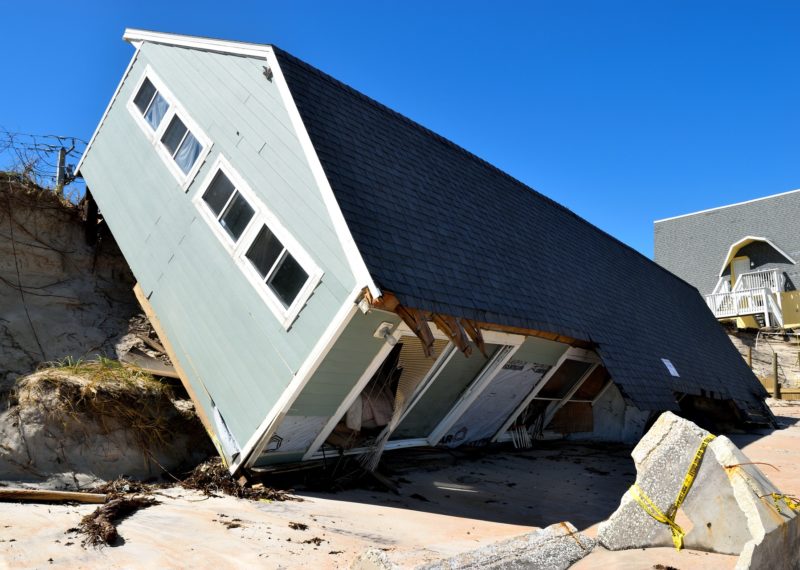W
hen Florida resident Scott Maynard, 67, opened his home insurance bill this year, he got a nasty surprise. The premium on his family’s four-bedroom home in Miami-Dade County had jumped from a little over $4,000 to more than $6,000.
“Since we moved into this house eight years ago, it’s been slowly creeping up, but only by hundreds of dollars.” Until this year, when People’s Trust Insurance upped the price about 50%, said Maynard. “I mean, that’s ludicrous, we haven’t filed anything.”
Maynard’s insurance agent couldn’t find a cheaper premium, so he and his family decided to stay with People’s Trust and figure out how to pay the extra thousands each year. Maynard’s wife works as a cancer researcher at the University of Miami. “She makes decent money, but now we’re getting to the edge,” said Maynard, who is retired but now plans to go back to work as a substitute teacher.
“What choice do we have? They got you between a rock and a hard spot — we’re still paying the house off.”
Stories like Maynard’s have become the norm over the last few years in states like Florida, Louisiana, California and Texas — those hit especially hard by climate impacts. Disasters like hurricanes and wildfires are increasingly expensive; so far this year, extreme weather has cost insurers $40 billion, the third highest amount of losses on record.
Home insurance rates have thus skyrocketed, with some insurers restricting coverage in areas or pulling out of states altogether. Insurance policy non-renewals increased by nearly 800% from 2015 to 2021 in some of the most climate-vulnerable communities — often communities of color that already face discrimination by insurers.
State Farm and Allstate are no longer writing policies from new homeowners in California; since Hurricane Ida, at least seven insurers have failed in Louisiana; and Florida’s last-resort state-backed insurance company, Citizens, has become the largest insurer in the state following pull-outs and price hikes from major insurers.
At the same time, insurance companies continue to exacerbate the problem, investing Americans’ premiums in — and providing insurance for — fossil fuel projects, which need various forms of coverage to secure financing.
A report released by the California Department of Insurance last year shows that U.S. insurers (those that operate in California and are subject to regulation) invested $536 billion in fossil fuels in 2019. State Farm invested $30 billion and AIG $24 billion. AIG also continues to underwrite oil and gas projects, including the Freeport liquified natural gas terminal in Texas.
Just $11.4 billion was invested in green bonds, financing projects that advance energy efficiency, sustainable agriculture and pollution prevention.
And yet, regulators have been slow to act. “If financial regulators are looking at banks and insurance companies and their balance sheets and saying, well, we haven’t seen a major company fail [due to climate change],” said Carly Fabian, policy advocate at Public Citizen’s Climate Program. “Then they might be missing impacts on the consumers who are going into further debt or losing their homes.”
A potential foreclosure crisis would undermine the tax base and make it even harder to invest in adaptation to climate change, added Fabian. There’s a lot at stake.
As for insurers, Fabian points to delay tactics, citing the uncertainty around how climate change will affect the economy and when fossil fuel investments will actually drop in value.
“What they’re basically saying is, we don’t know exactly how big the iceberg is or where it is, so we’re just not going to even bother turning the ship,” Fabian explained. “And what regulators can do is say, you’ve got the whole American economy on the ships. If you’re not sure, you need to turn the ship earlier — you need to give it a wider berth.”
The current insurance crisis has been exacerbated by factors that allow insurance companies to largely ignore the reality of long-term climate risk.
Insurers are in the business of ensuring risk — where there’s risk, they can make money. The more risk a homeowner faces, the more they’re willing to pay (and pay more) for insurance. And when it comes to actually paying out claims for disasters, insurers primarily rely on their own insurance, which they buy from massive international reinsurers like Berkshire Hathaway and Lloyd’s of London.
“They’re not holding on to a lot of the risks that they underwrite, but instead, they’re paying to have someone else take on that risk,” says Sean Hecht, managing attorney at the California regional office for Earthjustice, who studies insurance and climate change. When disaster strikes, it’s the reinsurers that actually supply the billions of dollars associated with that event.
Another factor that insulates insurance companies from climate risks is the current practice of writing annual policies; insurers are largely calculating risk in the short term, said Hecht. “That mismatch between the scale of the underwriting and actuarial calculations and the scale of the onset of the challenge of climate change is actually a pretty essential problem that we have in our risk management systems.”
Still, pressure from environmental advocates has spurred insurers to make some progress in attempting to mitigate their climate impacts. According to Insure Our Future’s 2022 annual scorecard, 13 companies have adopted oil and gas restrictions and 41 insurance companies have restrictions on coal, making it uninsurable outside of China. The companies that ranked in the top ten for underwriting and investment restrictions are all European; U.S. insurers are lagging behind.
And a recent Public Citizen report on insurers covering coal mining revealed that the follow-through on the claims companies have made is lacking. “The concerning thing is seeing how many of these policies are either not being adhered to — companies appear to be directly violating their own policy — or they have a policy that is just completely vague.”
Going forward, she says, “what we need to be able to do is compare what they’re actually underwriting with their stated commitments and also know how they’re interpreting them if they’ve made this big claim. What actions are they taking now? That’s the kind of data that isn’t typically publicly available.”
But it will be soon. In September, the Senate Budget Committee launched an investigation into seven insurance companies, asking for disclosure of coverage and investments in fossil fuels and how the companies respect human rights.
Fabian says it could reveal a lack of internal progress on the broad commitments companies are making and aren’t necessarily being held accountable for.
At the state level, insurance commissioners are also starting to impose climate risk regulations. Last year, Connecticut Commissioner Andrew Mais released guidance for insurers on climate-associated risks. The Connecticut state senate proposed a bill earlier this year that would require insurance companies to pay the state a 5% tax on insurance premiums they sell to fossil fuel companies.
Some advocates are proposing government reinsurance programs that would be in part funded by a similar tax. Fabian says the team at Public Citizen and others are thinking about “how can fossil fuel companies and the insurance companies that support them be paying into this, so it’s not just the people who have contributed the least to climate change end up paying the most?”
Nexus Media News is an editorially independent, nonprofit news service covering climate change. Follow us @NexusMediaNews


